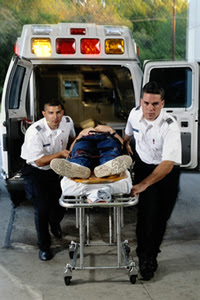
Study results published in the April issue of the American Journal of Public Health indicate that expanding naloxone training and use among emergency medical service (EMS) staff could reduce overdose deaths caused by a type of prescription painkiller called opioids. Naloxone is a prescription drug that reverses the effects of opioids. It can be life-saving during a potentially fatal opioid overdose if administered in time.
Study Findings
Study researchers analyzed National Emergency Medicine Service Information System data to consider factors associated with naloxone use among EMS staff. According to the published study, "Disparity in Naloxone Administration by Emergency Medical Service Providers and the Burden of Drug Overdose in Rural Communities," key findings include:
- Naloxone is underutilized in rural areas.
- Rural areas have 45% more prescription opioid overdose deaths compared to urban areas, but naloxone use is only 22.5% greater in rural areas compared to urban naloxone use.
- Males are less likely to receive naloxone than females.
- Young people are more likely to receive naloxone.
- Adults age 20 – 29 years were most likely to receive naloxone, while adults age 60 and over were least likely to receive naloxone.
- Advanced EMS are more than five times as likely to administer naloxone compared to basic EMS.
Why This Is Important
The United States is in the midst of a prescription opioid overdose epidemic. Each day, 44 people in the United States die from overdose of prescription opioids. Many more become addicted. Expanding naloxone training and capabilities among EMS staff can help to reduce deaths from prescription opioid overdose. Additionally, cities and states across the country can take steps to reverse this epidemic by improving opioid prescribing practices through use of prescription drug monitoring programs.
Learn More






















.png)











No hay comentarios:
Publicar un comentario